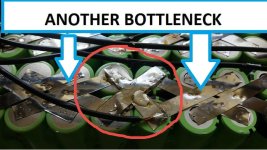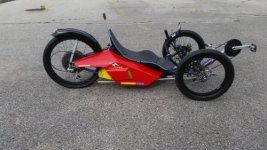johnnyz said:
No clue?...Well, your WRONG about that one. It wasnt poorly built either. There always has to be one..For your information, I built another 72 volt pack and when I took it apart it shows NO SIGNS what soever of over heating and that controller pulls a max of 29 amps. Once I balance it I will test this with my bike limiting the amps to 29 and see what the voltage sag and resistance values are.
Yes. No clue at all. It is indeed poorly build and he is not WRONG. He is RIGHT.
From the start i will tell you your mistakes so you can learn.
1. You've chosen worst cell design you could (2x series connection)
2. You thought you copied nickel strips design from reputable builder but you had no clue what you are doing and you made a big mistake trying to copy it.
3. So you have created ENORMOUS bottleneck at every series connection leading to nearly creating short because of melted heatshrink of cells.
4. You haven't even used barley paper gaskets on positive ends.
5. When trying to repair it aka 'save it' you still did not have a clue how current passes. I am talking about this picture:

You still have current passing by only 2 thin nickel strips...
What you should have done.
1. Design pack so there are more series connections. Ideally as much as cells in parallel.
2. Use more layers of nickel strip. There were test on forum(which you of course did not read) which determined that for 0.15*7mm nickel you should not exceed 5A(cont.) so for every cell you should have 2 layers of nickel strip.
3. Use protection at positive ends. Barley paper gaskets are very cheap.
See? It's not hard.
And in my opinion you still have very high Internal resistance. I get more than half less (50-70mOhm) at 9P of GA cells when Adaptto measures it. But my pack is of course done with generous amount of nickel so i don't waste precious Watts on heating up nickel.
Please don't think of this reply as a personal attack, it is not

Cheers and keep on upgrading





